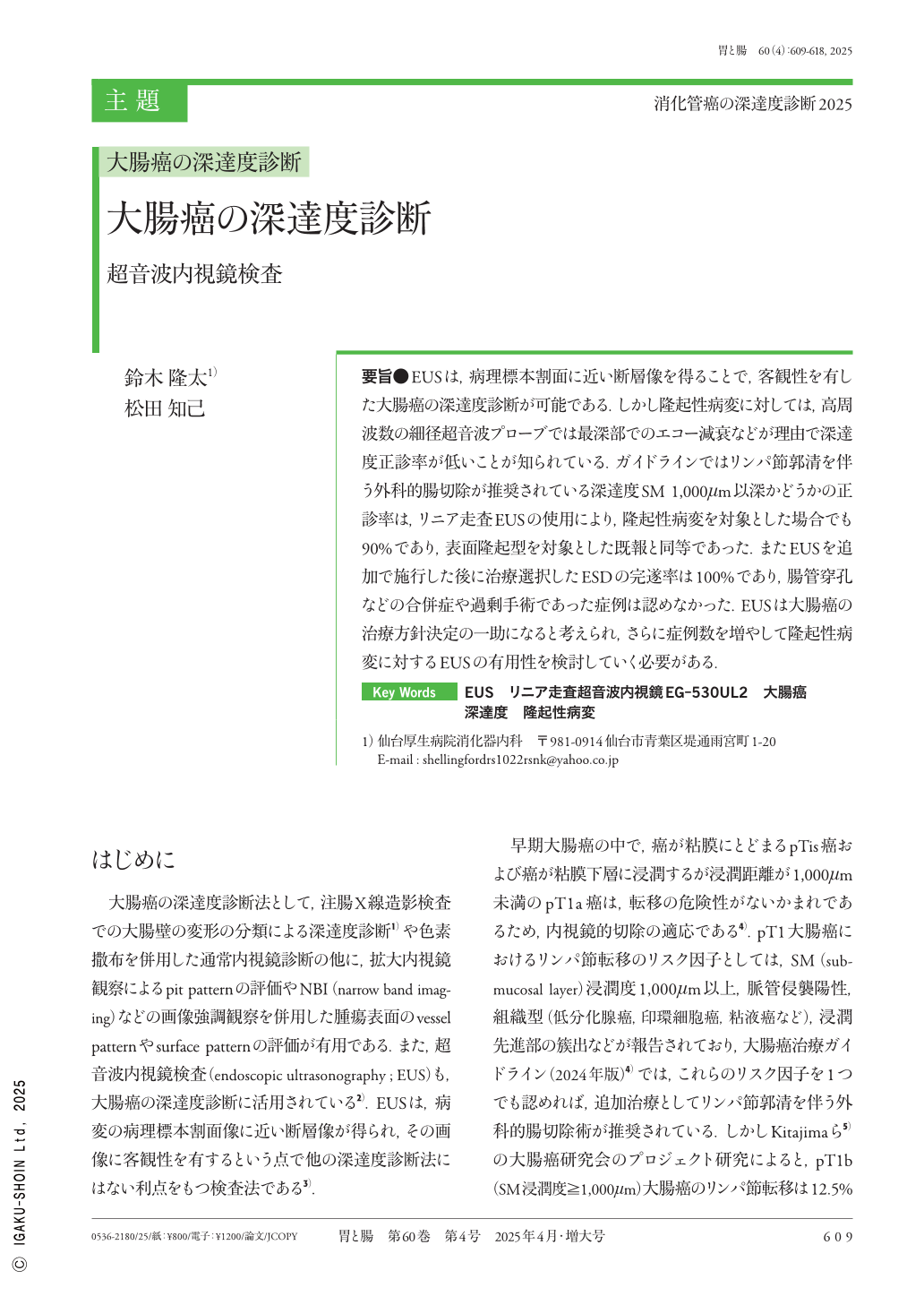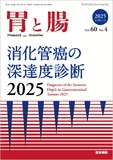Japanese
English
- 有料閲覧
- Abstract 文献概要
- 1ページ目 Look Inside
- 参考文献 Reference
要旨●EUSは,病理標本割面に近い断層像を得ることで,客観性を有した大腸癌の深達度診断が可能である.しかし隆起性病変に対しては,高周波数の細径超音波プローブでは最深部でのエコー減衰などが理由で深達度正診率が低いことが知られている.ガイドラインではリンパ節郭清を伴う外科的腸切除が推奨されている深達度SM 1,000μm以深かどうかの正診率は,リニア走査EUSの使用により,隆起性病変を対象とした場合でも90%であり,表面隆起型を対象とした既報と同等であった.またEUSを追加で施行した後に治療選択したESDの完遂率は100%であり,腸管穿孔などの合併症や過剰手術であった症例は認めなかった.EUSは大腸癌の治療方針決定の一助になると考えられ,さらに症例数を増やして隆起性病変に対するEUSの有用性を検討していく必要がある.
Endoscopic ultrasonography(EUS)can be used to objectively diagnose the depth of invasion of colorectal cancer by obtaining cross-sectional images that closely resemble the lesion's pathology. However, for protruding lesions, diagnostic accuracy for the depth of invasion is known to be low when using an ultrasonic miniature probe, owing to factors such as attenuation in the deeper layers. The guidelines recommend surgical colectomy with lymph node dissection for lesions thought to be deeper than 1,000μm in the submucosal layer(SM). The diagnostic accuracy for identifying whether the depth surpasses 1,000μm is 90% using a linear scanning ultrasound endoscope, which is similar to the accuracy previously reported for surface protruding lesions. Furthermore, endoscopic submucosal dissection(ESD)was completed at 100%, with no complications such as bowel perforation or excessive surgery. Linear scanning ultrasound endoscopy is regarded as a valuable tool in determining treatment strategies for colorectal cancer, and larger sample sizes are required to investigate its utility in protruding lesions.

Copyright © 2025, Igaku-Shoin Ltd. All rights reserved.


